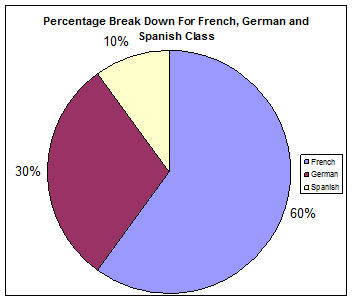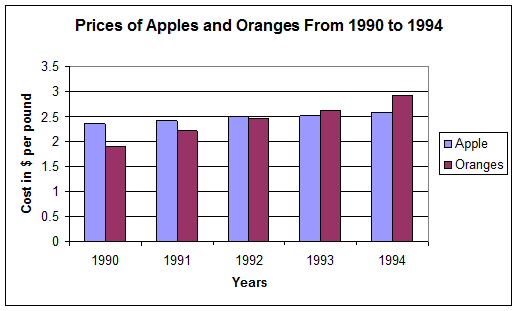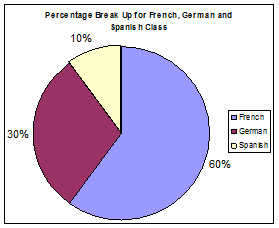Not all solutions we find are relevant or viable. It is imperative that we examine solutions in the context of the
problem and see whether the value(s) we find are logical. Let's look at an example in which there are more than
two values for a variable and we must determine which one is the correct value.
Example 1:
The area of a rectangle is 45 cm2. If the length is 4 units more than the width, find the length of the rectangle.
Approach 1: Constructing a solution using simultaneous linear equations
Define the problem: Find the length of a rectangle, the area of which is 45 cm2.
Identify relevant information:
Area of rectangle = 45
Length is 4 units more than the width.
Define the variable: Let the length of the rectangle be x and the width be y.
Convert relevant information to a mathematical equation: The area of a rectangle is the product of its length and
width. We know the area is equal to 45 cm2.
x * y = 45 …..(i)
The length is 4 units more than the width:
x = y + 4 ….. (ii)
Solve the mathematical equation:
We will solve equation (i) by substituting the value of x from equation (ii):
(y + 4) * y = 45
y2 + 4y = 45 {multiplying the terms on the left hand side by y}
y2 + 4y – 45 = 0
y2 + (9y – 5y) – 45 = 0 {solving quadratic equation by completing the square}
(y2 + 9y) + (-5y – 45) = 0 {rearranging terms}
y(y + 9) – 5(y + 9) = 0
(y – 5)(y + 9) = 0
Hence, either (y – 5 ) = 0 or (y + 9) = 0
If (y – 5) = 0, then, y = 5
If (y + 9) = 0, then y = -9
Thus, y = 5 or -9
But y stands for the width, which cannot be a negative value. So even though both the values of y (5 and -9) are mathematically correct, they are not correct in the context of the problem. Thus we will use y = 5 as the value for the width.
Substituting y = 5 in equation (ii) we get:
x = y + 4
x = 5 + 4 = 9
Thus, the length of the rectangle is 9 centimeters and its width is 4 centimeters.
Check whether your solution is correct
You can check whether the value(s) you have for your variable is correct by substituting it back into the
mathematical equation. In this problem, we are finding the value of length and width such that the area of the
rectangle is 45 cm2. Our values for length and width are 9 and 5 respectively.
Let's find the area of the rectangle whose length and width are 9 and 5 centimeters:
Area = length * width = 9 * 5 = 45 cm2
Hence, our solutions are correct.
Note: Sometimes your solution would have more than one correct value for a variable. Be cautious in deciding which value you should use by understanding values in the context of the problem.
Presenting, comparing and analyzing mathematical information
Sometimes mathematical information is presented to us verbally, while at other times it may be represented in
tables, pictorially, graphically, or symbolically. At times it is easier to analyze information given to us if we can
present the information in tables or graphs.
Example 2:
A glass is 1/2 full of water. Another glass is 3/4 full. Which glass is holding more water?
Approach 1: Convert fraction to decimals
One way to look at this problem is by comparing which of the two fractions, 1/2 or 3/4, is bigger. We can do this by
converting the fractions to their decimal values and comparing them.

Because .75 is greater than .5, the glass that is 3/4 filled is holding more water.n
Approach 2: Present the question pictorially

A B
Figure 1
Looking at Figure 1 above we can compare the two glasses and say that glass B has more water. Thus, the
glass which is 3/4 full is holding more water.
So, sometimes it is easier to visually compare information, and we may find solutions to mathematical problems
without having to do any math.
Other common tools for presenting information pictorially are line graphs, bar charts, and pie charts. Let's learn to
use these tools in presenting, analyzing and comparing information.
Representing mathematical information in pictorial form
Example 3:
Three languages are taught at the ABC language school: French, German, and Spanish. A total of 100 students
are enrolled in the three classes. Of those students, 60% are taking French, 30% are taking German, and 10% are
taking Spanish. Present this information pictorially.
Solution: We are given the percentage breakdown for students studying the three languages. We can present this information in a pie chart as shown below:

Figure 2: Pie chart for percentage breakdown for French, German, and Spanish classes.
Example 4:
Joe is interested in comparing the average prices of apples and oranges per pound for five consecutive years. He has collected data on the prices and has presented it in the table below. Present this information using an appropriate graph.
Year |
Apples |
Oranges |
1990 |
2.35 |
1.89 |
1991 |
2.41 |
2.22 |
1992 |
2.49 |
2.45 |
1993 |
2.52 |
2.63 |
1994 |
2.59 |
2.93 |
Solution: Because we are interested in comparing the prices of apples and oranges over a five-year period, we can present the information using bar charts. Bar charts aid us in making quick visual comparisons between two or more variables for a given time period. Presented below is the bar chart for the prices of apples and oranges from 1990 to 1994.

Figure 3: Bar chart for prices of apples and oranges
Integrating mathematical information
In real life, we are sometimes presented with information in more than one form, and we are supposed to integrate
the two sources of information to answer the question. While there are no rules of thumb to follow in doing so, the
best approach is to understand what each piece of information is conveying and methodically pull them together to
construct a solution.
Example 5:
ABC language school teaches three languages: French, German, and Spanish. The total number of students
collectively in the three language classes is 100. The percentage breakdown for each language class is presented
in the pie chart below. The percentage of students who earned an A in their respective classes is given in Table 1
below. Use the two information sources to find the language with the maximum number of students who earned As.
Figure 4: Pie chart for percentage breakdown for French, German, and Spanish class

Table 1: Percentage of students earning As
Language |
Students who earned A |
French |
20% |
German |
30% |
Spanish |
50% |
Solution: Note that all the numbers are in percentage form. We need to be careful to not misconstrue them for absolute values and reach a hasty conclusion.
Let's first find the total number of students in each language class. The total number of students is equal to 100.
Language |
Percentage |
Total number of students |
French |
60 |

|
German |
30 |

|
Spanish |
10 |

|
Thus, there are 60, 30, and 10 students in French, German, and Spanish class, respectively.
Next, let's use the percentages in Table 1 to calculate the number of students who earned A's in each course:
Language |
Total number of students |
Students who earned an A |
Number of students who earned an A |
French |
60 |
20% |

|
German |
30 |
30% |

|
Spanish |
10 |
50% |

|
Thus, 12 students in French, 9 students in German, and 5 students in Spanish earned As. The students in French
class earned the most As.
Let's look at another example and learn to compare results presented to us:
Example 6: Joe has collected information on the average prices of apples and oranges over a five-year period.
The information is presented in the chart below. Based on the chart, answer the following questions:
a) In which year was the price per pound of apples the least?
b) In which year(s) was the price of oranges greater than the price of apples?
c) In which year was the difference between the price of apples and oranges the greatest?

Solution: To answer the questions, we will look at the bar chart.
a) In which year was the price of apples per pound the least?
The blue bars in the bar charts stand for the price of apples. If we observe the blue bars we note that their height is
increasing from left to right. Alternatively, you can also consider the values placed on top of the blue bars, which
are: 2.35, 2.41, 2.49, 2.52, and 2.59. The least of these values is 2.35, which is for the year 1990. Thus, in 1990
the price per pound of apples was the least, and was equal to $2.35.
b) In which year(s) was the price of oranges greater than the price of apples?
For this part we will have to compare the height of the blue bars (the price of apples) with the purple bars (price of
oranges). We can do this comparison visually or by comparing the values given on top of the bars. From the chart
we can see that for the years 1993 and 1994, the height of the purple bars was taller than the height of blue bars.
Thus, for the years 1993 and 1994, the price of oranges was greater than the price of apples.
c) In which year was the difference between the price of apples and oranges the greatest?
This part of the question can be solved either by making a visual comparison or by taking the difference between
each of the values over the blue and purple bar for five years. Visually, we can see that the difference is greatest
for the year 1990, where the price per pound for apples was $2.35 and for oranges was $1.89.
Alternatively, we can take the absolute difference between the prices for apples and oranges for each of the five years, as given in the table below:
Year |
Price of apples |
Price of oranges |
Absolute difference |
1990 |
2.35 |
1.89 |
.46 |
1991 |
2.41 |
2.22 |
.19 |
1992 |
2.49 |
2.45 |
.04 |
1993 |
2.52 |
2.63 |
.11 |
1994 |
2.59 |
2.93 |
.34 |
Hence, we can see that the difference between apples and oranges was the greatest in 1990.
Try these questions
-
The perimeter of a rectangle is 13 cm and its width is 2 ¾ cm. Find its length.
a. 3 ¾
b. 2 ¾
c. 1 ¾
d. 5 ¾
Answer: a
Solution:
Let the length of the rectangle be x cm.
The perimeter of the rectangle = 2 ( length + width )
= 2( x + 2 ¾ )
= 2( x + 11/4)
Given that the perimeter = 13 cm
Hence, 13 = 2 ( x + 11/4 )
13/2 = x + 11/4
13/2 - 11/4 = x
13*2 – 11*1 = 26 - 11 = 15 = x
4 4 4
Hence, x = 15/ 4 = 3 ¾ cm
What should be added to twice the rational number – 5/2 to get 2/5 ?
a. 27/5
b. 5/27
c. 26/10
d. 27/25
Answer: a
Solution:
Let the number to be added be n.
Given condition:
n + 2*( -5/2 ) = 2/5
n + (-5) = 2/5
n – 5 + 5 = 2/5 + 5
n = 2 + 5* 5
5
n = 27/5
The present age of Sam's mother is three times the present age of Sam. After 5 years their ages will add to 66
years. Find the present age of Sam.
a. 19
b. 14
c. 16
d. 20
Answer: b
Solution:
Let Sam's age be x years.
Age of Sam's mother = 3 * ( x) = 3x
After 5 years:
Sam's age = x + 5
Age of Sam's mother = 3x + 5
Sum of Sam's age and his mother's age = 66
Hence, ( x + 5) + ( 3x + 5) = 66
4x + 10 = 66
4x = 66 – 10 = 56
x = 56/ 4 = 14 years